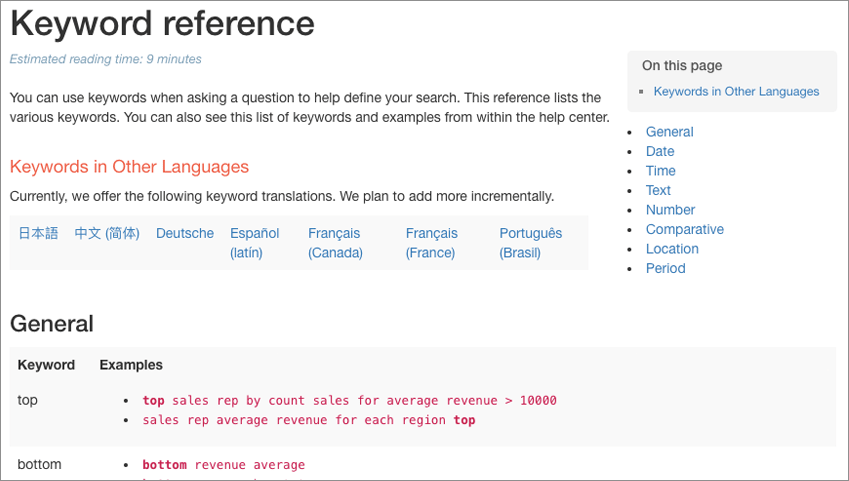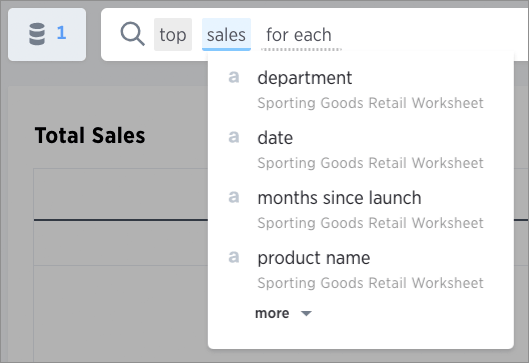Overview of keyword searches
Use keywords when asking a question to narrow and further define your search.
In addition to column names, values, and filters, the search bar also accepts keywords. You can access a list of keywords and other reference materials in the reference section or in the help center. Open the help center by selecting Help from the top navigation bar.

Within the help center, you’ll find videos and documentation that pertain to the current version of ThoughtSpot. Here is where you can also find a list of keywords. You can expand each section to see which keywords are available and examples on how to use them.
Example: Simplify search with the top keyword
The top keyword can be a powerful addition to your search when you remember to use it.
By using one keyword, you can greatly simplify your searches.
The top keyword is one such keyword.
Its syntax looks like top n for each x.

Some common search examples it can simplify are finding the:
-
top two performing sales rep
-
top revenue average revenue by state
-
top two students ranked by source for each class
Types of keywords
Keywords serve a variety of predefined purposes, and are divided into different groups. The groups are as follows:
-
Basic keywords
You can use keywords such as
topandbottomto, for example, only see results for the best or worst performing sales rep. -
Date keywords
Date keywords give you the freedom to narrow your search by days, weeks, months, quarters, or years. There are also a number of date related keywords such as
after,before, andyear-over-year. Use the new date keywords to describe dates in the future. This is useful for exploring things that are scheduled for a future date, such as shipments due to go out in the next week. -
Time keywords
Time keywords are the most useful when trying to figure out how many visitors you’ve received within the last
n minutes or hours. -
Text keywords
You can use text keywords to find similar words or phrases that contains a certain word. For example,
product name contains green. -
Number keywords
These keywords allows you to define your search by sum, average, count, max, min, and other accumulations.
-
Comparative keywords
Filter keywords work in the same way as filters on table columns or chart axes.
-
Location keywords
The keywords
nearandfarther thanallow you to search with spatial filters on your geo type columns with latitude/longitude data. This lets you focus your search based on distance and locations. You can specify a specific radius using miles, kilometers, or meters.You can only use location keywords if you bring your data into ThoughtSpot’s in-memory database. You cannot use them if you connect to your data in an external database.



